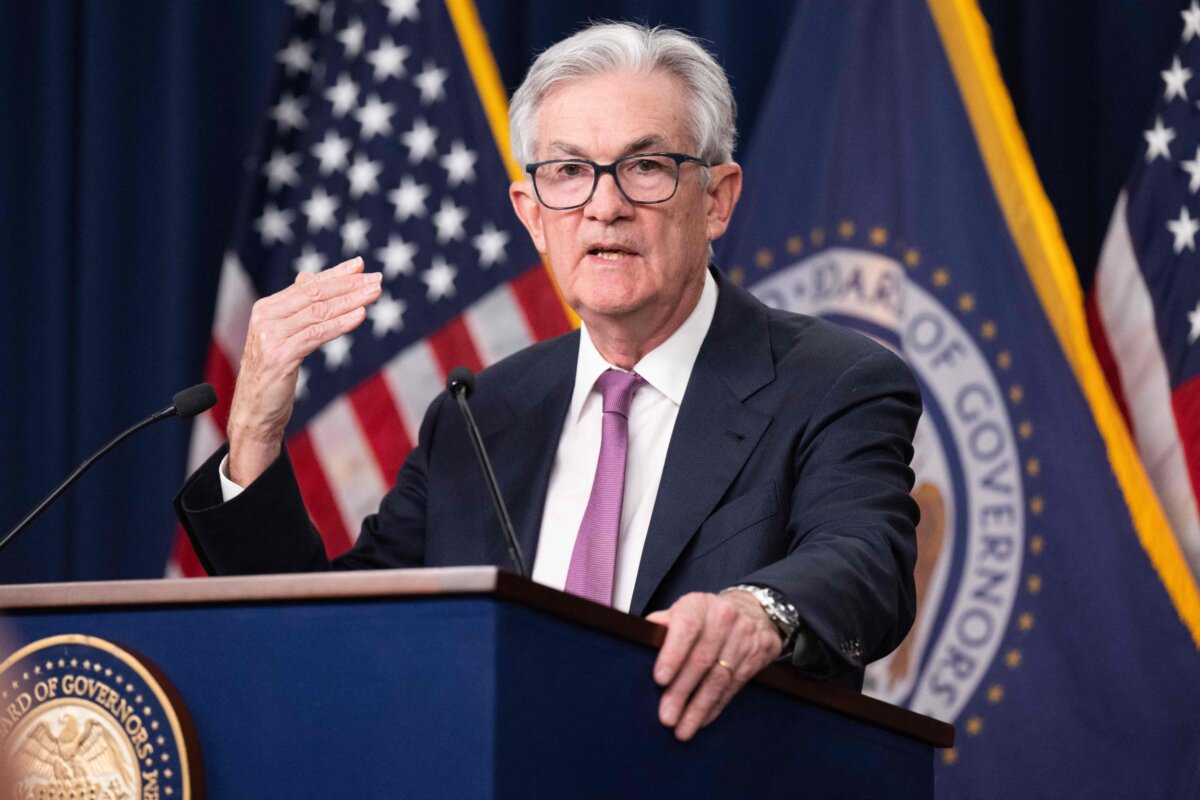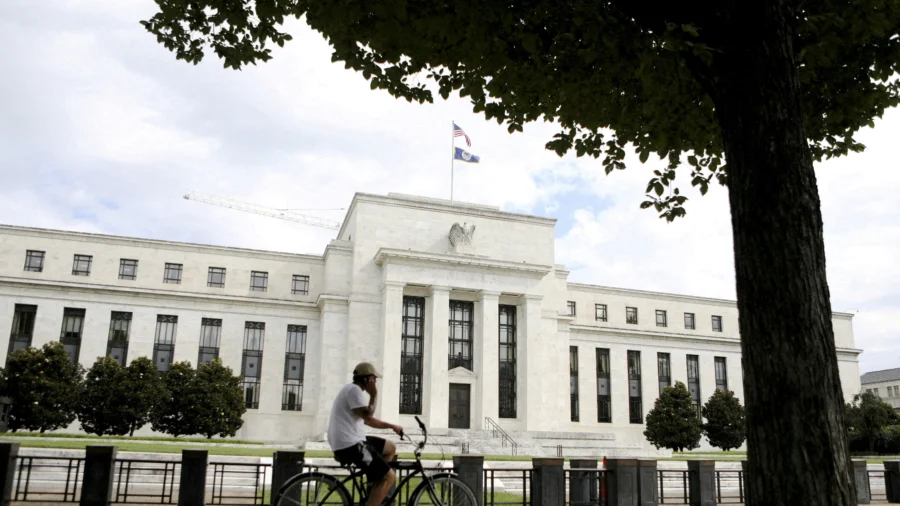The “vast majority” of Federal Reserve officials would likely support cutting interest rates in September if the data continue to favor looser monetary policy, according to minutes from the July meeting.
The meeting summary of the policy-making Federal Open Market Committee (FOMC) highlighted that U.S. central bank officials are becoming increasingly confident that inflation is moving toward the institution’s target of 2 percent.
With employment risks forming and inflation challenges decreasing, most participants agreed that easing policy restrictions would be appropriate next month.
“Participants viewed the incoming data as enhancing their confidence that inflation was moving toward the committee’s objective,” the minutes said. “The vast majority observed that if the data continued to come in about as expected, it would likely be appropriate to ease policy at the next meeting.”
“Several” meeting participants noted that there was a “plausible case” supporting a rate cut at the July meeting amid the progress on inflation and the increase in the unemployment rate.
At the same time, a “couple” of participants noted that inflationary pressures could persist because “the economy had considerable momentum, and that, even with some easing of the demand for labor, the labor market remained strong.”
Staff economists trimmed their growth outlook for the second half of 2024 “in response to weaker-than-expected labor market indicators.”
“As a result, the output gap at the start of 2025 was somewhat narrower than had been previously projected, although still not fully closed,” the minutes stated. “Over 2025 and 2026, real GDP growth was expected to rise about in line with potential, leaving the output gap roughly flat in those years. The unemployment rate was expected to edge up slightly over the remainder of 2024 and then to remain roughly unchanged in 2025 and 2026.”
Many participants warned that easing restrictive policy “too little or too late” could threaten “unduly weakening economic activity or employment.”
Following the July policy meeting, the Fed left its benchmark interest rate at a 23-year high within a range of 5.25–5.50 percent.
Fed Chair Jerome Powell signaled that a rate cut could be discussed as early as next month’s meeting, though he stopped short of saying if the central bank will follow through on a quarter-point or half-point reduction.
“The broad sense of the committee is that the economy is moving closer to the point at which it will be appropriate to reduce our policy rate,” Powell said at a post-meeting news conference on July 31.
“The question will be whether the totality of the data, the evolving outlook in the balance of risks, are consistent with rising confidence on inflation and maintaining a solid labor market. If that test is met, a reduction in our policy rate could be on the table as soon as the next meeting in September.”
As the Fed observes “broader disinflation” across the economy and dissipating upside inflation risks, Powell told reporters that “you would think policy rates would move down from here.”
With the Fed close to restoring price stability—one of the institution’s chief mandates—Powell noted that there could be more of a focus on the job market.

Last month, the unemployment rate rose to 4.3 percent, the highest since October 2021. The higher-than-expected jobless figure triggered the Sahm rule, a widely watched recession indicator.
Ahead of the FOMC meeting on Sept. 17–18, the Fed will still have more inflation data to digest and another jobs report to comb through.
Balance Sheet Unwinding
According to the FOMC minutes, officials stressed the importance of monitoring the money markets—a part of the financial markets that offer short-term funds—amid the ongoing reduction of the central bank’s $7.2 trillion balance sheet.
Officials have been unwinding its holdings, including Treasury bonds, since June 2022. It is unclear if the central bank plans on maintaining its sizable post-pandemic balance sheet for the foreseeable future.
This past spring, Powell told reporters that the Fed’s balance sheet tapering efforts could come to a close soon.
In June, policymakers announced they would lower the cap for how much Treasurys can mature without being reinvested from $60 billion per month to $25 billion.
A chorus of Fed officials, including Lori Logan, president of the Federal Reserve Bank of Dallas, has said that slowing the amount of tapering could allow the central bank to continue its balance sheet runoff without disrupting financial markets.
But market watchers say that it is not the size of the Fed’s investment portfolio but rather its composition.
“If the economy continues to expand strongly and inflation remains sticky, we see a growing chance that future tightening discussions could involve altering the composition of balance sheet holdings,” said BlackRock economists Tom Becker and Simon Wan in a research note. “Though financial markets have largely ignored the possibility of a more active approach to shrinking or recasting the balance sheet, we view this as an underappreciated risk, particularly after the U.S. election.”
This, they warn, would pose downside risks for the U.S. dollar and long-term government bond prices.
That said, it is unlikely that the Fed will lower its balance sheet to where it was a decade ago, says Rob Haworth, senior investment strategy director for U.S. bank wealth management
“It seems unlikely the Fed will drop its balance sheet back to the $4 trillion level, as it stood in 2015–16, but given the extent the economy has grown since then, a larger Fed balance sheet may be justified,” Haworth stated in a note earlier this month.
Market Reaction
The financial markets were little changed following the Fed minutes, with the leading benchmark indexes up as much as 0.47 percent.
U.S. Treasury yields maintained their sea of red ink. The benchmark 10-year yield slumped below 3.77 percent. The two- and 30-year yields dropped to 3.90 percent and 4.04 percent, respectively.
The U.S. Dollar Index (DXY), a metric of the greenback against a basket of currencies, extended its losses midweek, falling to 101.00. The index erased its year-to-date gain, and is now down about 0.3 percent.
From The Epoch Times

